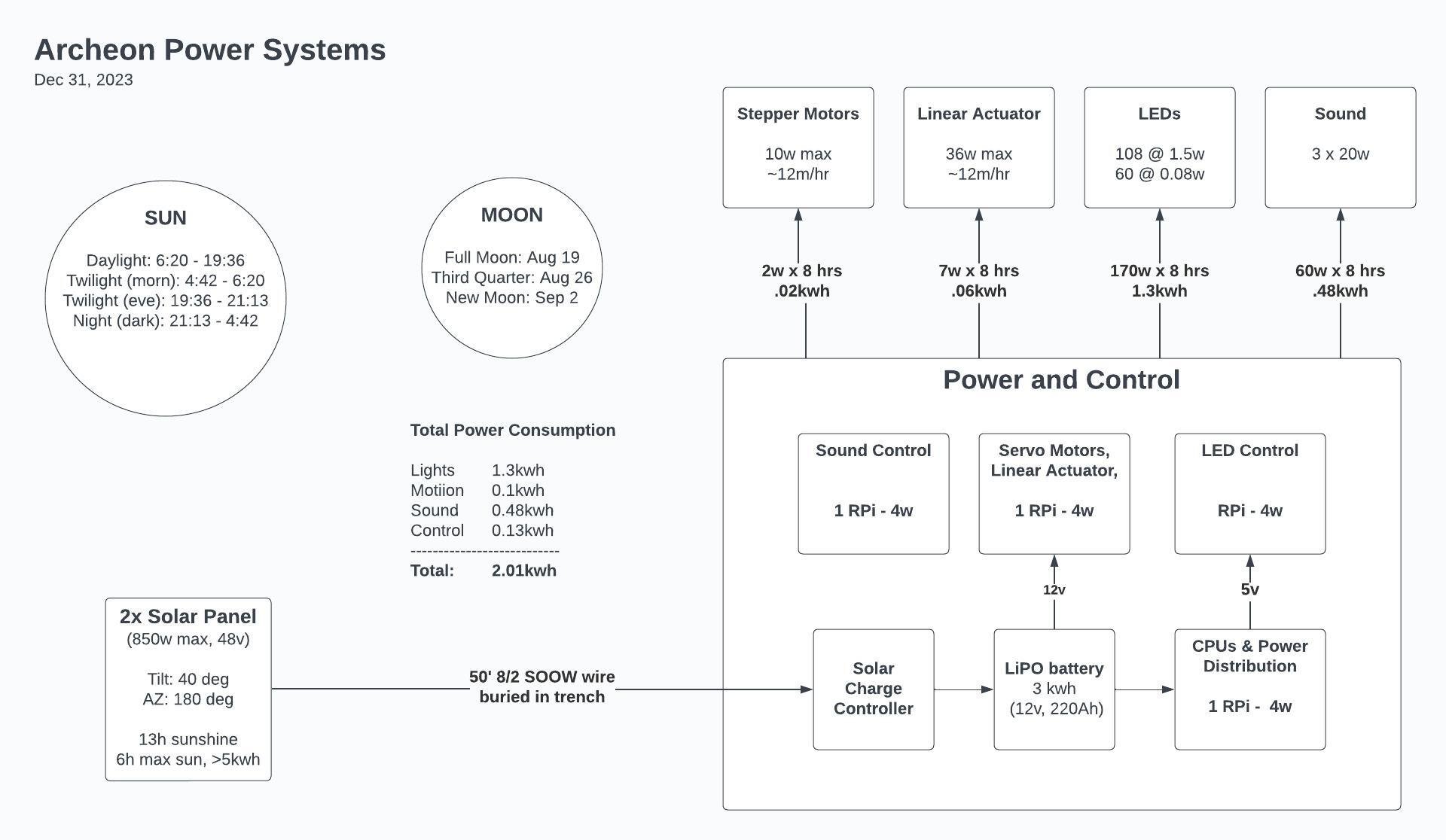Steel, Power and Control
Fanciful art sculptures such as electronic trees with big, green lasers are all well and good, but considerable thinking goes into the physical structures that support them in a harsh environment (wind, rain, static electricity, etc) as well as the power supplies and control systems that enable their interactions. In the vein of “what happens behind the big, green curtain,” this post is a dive into the physical structure, power supply and electronics that support the Archeon sculpture.
Steel Structures
Over the winter break, I designed the steel truss and frame that will support the sculpture. In summary, the truss and frame:
keeps the entire sculpture (13’ tall stem with 6’ flower) firmly anchored to the ground under high wind conditions (40+ mph) without the risk of falling over;
provides a strong core to which we attach the foam and fiberglass “aesthetic” part of the sculpture;
breaks the sculpture into 2 or 3 pieces that are easier to fabricate, transport and assemble on site;
provides a channel for utilities (data and power cables) that control the lights, linear actuators, stepper motors, etc.; and,
provides mechanical support to the large flower atop, the 3 arms, petals and smaller flower buds of the sculpture.
Here are two renderings of the truss, with and without the adjoining base. When we scan the model later in the month, I’ll add the full sculpture to the computer model.
How will we know if it’s strong enough? Our next step is to scan the sculpted model created in December, then create a full .stl file that can be used with wind load modeling software such as AirShaper or Ansys. We will partner with a mechanical engineer to make sure our model assumptions and use of the software are defensible (ie, give us meaningful results).
Power Systems
We plan to go fully solar/battery for the project. The sculpture operates only at night, so we need to power it for just the 8 hours of full darkness (9pm to 5am) every night. That leaves the other 16 hours for us to capture and store energy. To design the power system, we need to know the power loads (in watts) for the LEDs, linear actuators, stepper motors, CPUs, etc. that make the sculpture operate. The diagram below summarizes all of the loads and sources:
This will get updated I’m sure, but it’s a great start. What will not be updated is the calculated phase of the moon: We will have very dark skies for Burning Man 2024. Horray!!


